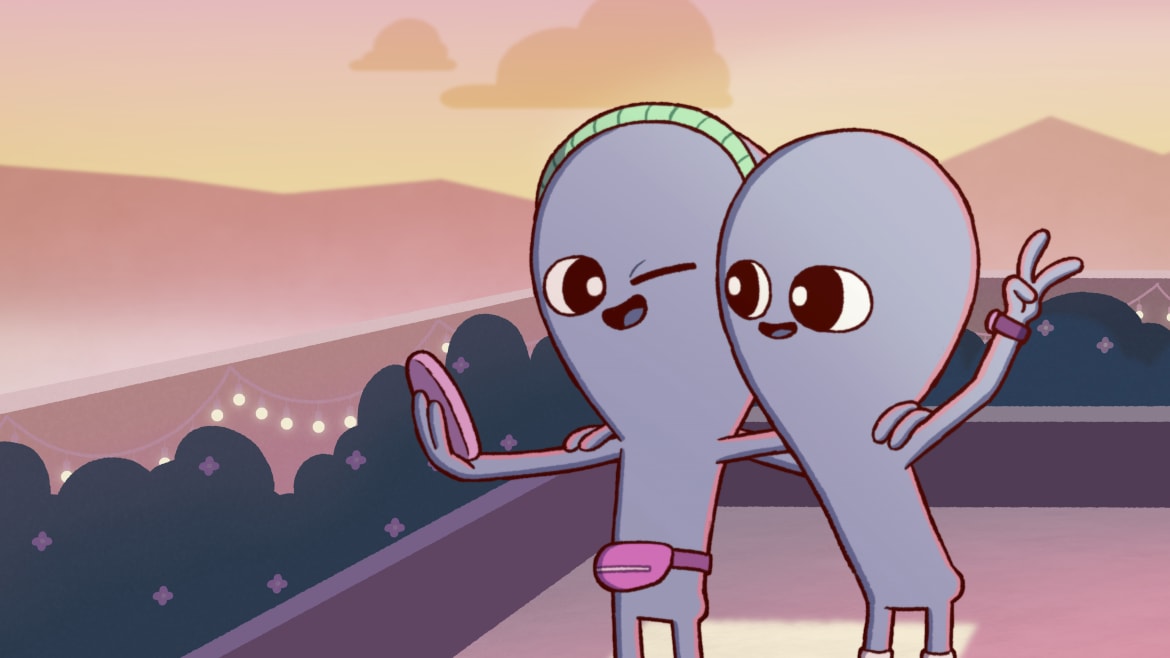Apple TV+
In only four years, writer and cartoonist Nathan W. Pyle’s Strange Planet webcomics have become a beloved staple of internet meme virality. Since 2019, Pyle’s drawings of little blue aliens—who experience the same uniquely human phenomena that we do, but express their feelings about them in a hyper-literal manner—have garnered 6.6 million Instagram followers and resulted in two bestselling compilation books. Like most things able to achieve this level of instant, inescapable popularity among both Facebook moms and Reddit addicts, Strange Planet is now its own television series, premiering on Apple TV+ Aug. 8.
While hardly prone to the insufferable banalities of other meme-to-screen creations like Is It Cake? and Haters Back Off, the Strange Planet series still struggles to expand its bite-sized observations about humanity into full episodes. The show often feels like more work to watch than it’s ultimately worth, incessantly asking viewers to unwrap its technical language for everyday occurrences. That’s not too unreasonable of a demand, but it keeps a thin layer between the art and its audience, one that not even Strange Planet’s beautifully rendered animation and some pleasant voice acting can perforate.
The little anthropomorphic creatures in Strange Planet move, speak, and operate just as we humans do, with one major exception: Things in their world may look like objects we have on Earth, but the names for those things are almost overly exact to their nature. For example, peaches become “fuzzy juice orbs,” onion rings are “crying circles,” and coffee and alcohol are labeled “jitter juice” and “mild poison,” respectively. The little blue beings in the series experience revolutions, not birthdays. They do not have parents, they have life-givers. Basically, if you look at any item and can think of an overcomplicated yet completely precise way to describe it, you’ll understand the basis of Strange Planet’s humor.

